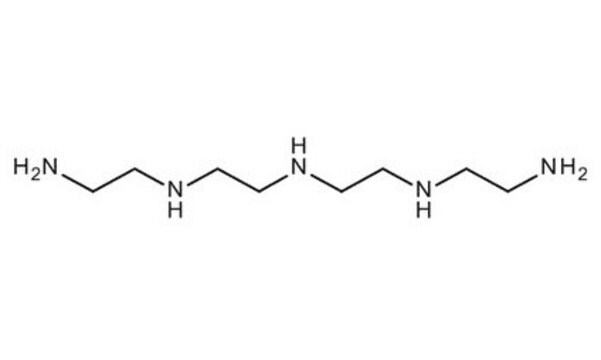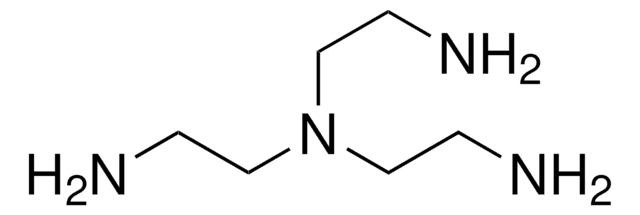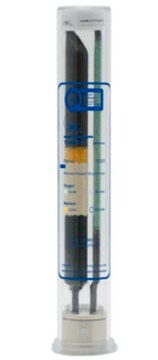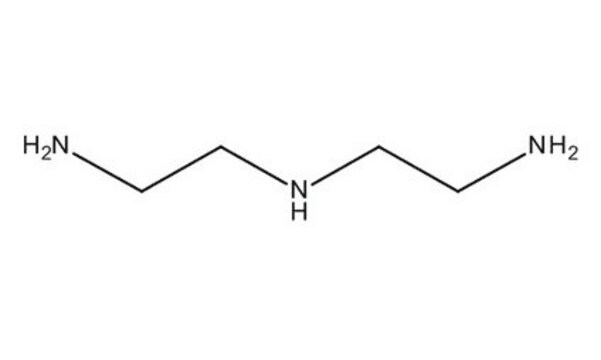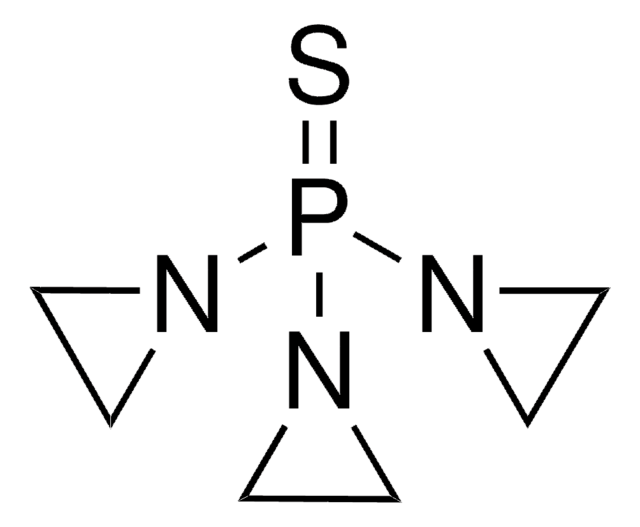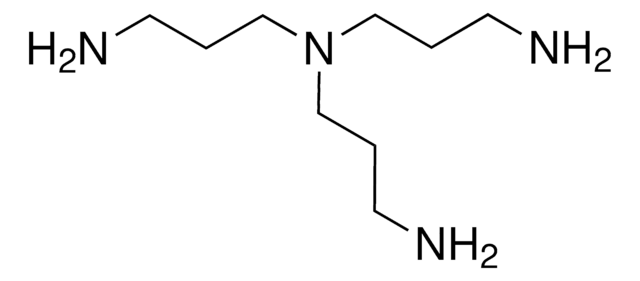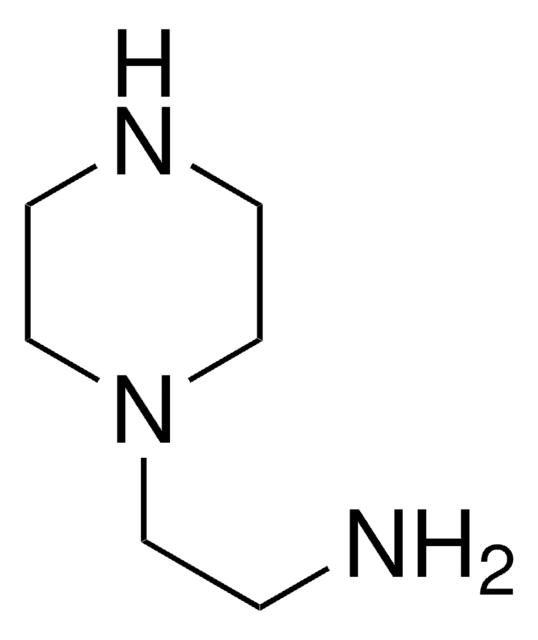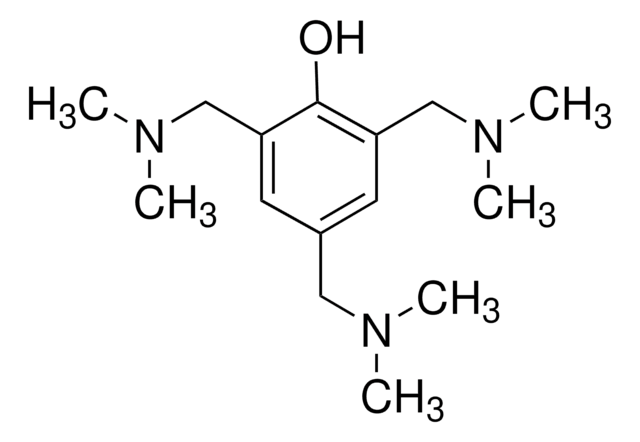T11509
Tetraethylenepentamine
technical grade
Synonym(s):
TEPA, Tetrene
About This Item
Recommended Products
grade
technical grade
Quality Level
vapor density
6.53 (vs air)
vapor pressure
<0.01 mmHg ( 20 °C)
autoignition temp.
610 °F
refractive index
n20/D 1.505 (lit.)
bp
340 °C
mp
−40 °C (lit.)
density
0.998 g/mL at 25 °C (lit.)
SMILES string
NCCNCCNCCNCCN
InChI
1S/C8H23N5/c9-1-3-11-5-7-13-8-6-12-4-2-10/h11-13H,1-10H2
InChI key
FAGUFWYHJQFNRV-UHFFFAOYSA-N
Looking for similar products? Visit Product Comparison Guide
Related Categories
General description
Application
- To functionalize magnesium 2,5-dihydroxyterephthalate (Mg-MOF-74) to enhance the CO2 adsorption performance of the material.
- To modify magnetic chitosan resin to form amine-bearing chitosan for the efficient removal of uranium from an aqueous solution.
- To synthesize poly(vinyl-chloride)/tetraethylenepentamine (PVC-TEPA) composite material, which is used as an efficient catalyst for the Knoevenagel condensation reaction.
signalword
Danger
Hazard Classifications
Acute Tox. 4 Dermal - Acute Tox. 4 Oral - Aquatic Chronic 2 - Eye Dam. 1 - Skin Corr. 1B - Skin Sens. 1
Storage Class
8A - Combustible corrosive hazardous materials
wgk_germany
WGK 2
flash_point_f
325.4 °F - closed cup
flash_point_c
163 °C - closed cup
ppe
Faceshields, Gloves, Goggles, type ABEK (EN14387) respirator filter
Choose from one of the most recent versions:
Already Own This Product?
Find documentation for the products that you have recently purchased in the Document Library.
Customers Also Viewed
Our team of scientists has experience in all areas of research including Life Science, Material Science, Chemical Synthesis, Chromatography, Analytical and many others.
Contact Technical Service